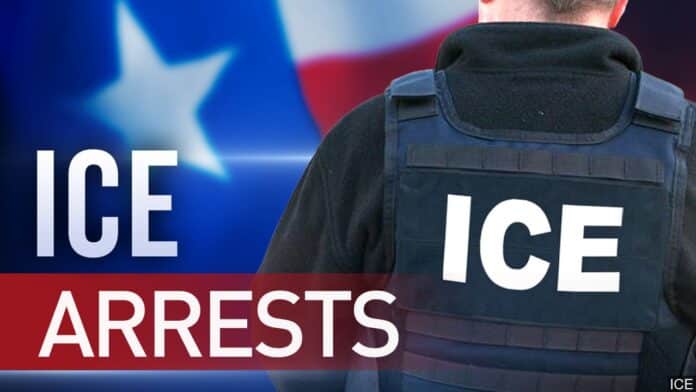By BEN FOX Associated Press
WASHINGTON (AP) — Immigration arrests at courthouses will be more limited than they were under President Donald Trump in a change of policy announced Tuesday by the Biden administration.
Immigration and Customs Enforcement agents would no longer be authorized to carry out routine arrests at courthouses, a practice that Homeland Security Secretary Alejandro Mayorkas said discouraged people from attending court hearings and cooperating with law enforcement.
ICE can make arrests at courthouses in cases involving matters of national security or if the person poses a threat to public safety. Agents can also apprehend someone who is the subject of an active pursuit or who authorities suspect may destroy evidence in a criminal case, Mayorkas said in a statement announcing the new policy.
The goal, Mayorkas said, is to balance the “fair administration of justice” with immigration enforcement.
“The expansion of civil immigration arrests at courthouses during the prior administration had a chilling effect on individuals’ willingness to come to court or work cooperatively with law enforcement,” he said.
Some advocates believe the new policy doesn’t go far enough. Naureen Shah, senior advocacy and policy counsel for the American Civil Liberties Union, said the exceptions for national security and public safety are too broad and the mere presence of immigration authorities near courthouses can make people afraid to seek legal protection, whether arrests are made or not.
Shah urged the Biden administration to also limit the presence of ICE or Customs and Border Protection at schools and hospitals, constrain the use of force and end the practice of working with local law enforcement to assist with deportations.
“The Biden administration clearly recognizes the damage done to immigrant communities,” she said. “Now it must follow through on its commitment and end these harmful practices once and for all.”
The new policy is part of a broader realignment of immigration policy under Biden, whose administration has rolled back some of the more restrictive measures of his predecessor. It has retained some policies, including a public health order that authorizes CBP to quickly expel most people trying to illegally enter the U.S.
As part of its border enforcement strategy, the administration also announced it would crack down on migrant smuggling with targeted financial and travel sanctions and other measures against traffickers in a plan dubbed “Operation Sentinel.”
Under Trump, immigration authorities sparked criticism among advocates and some law enforcement officials with a policy, formalized in 2018, that authorized routine apprehensions at federal, state and local courthouses.
Officials argued at the time that they were compelled to make arrests at courthouses because some local jurisdictions, under “sanctuary city” policies, refused to cooperate with ICE and turn over noncitizens from jails and prisons.
That Trump-era policy prioritized public safety threats such as gang members but did not prohibit more routine apprehensions and did not bar agents from detaining family members, friends or witnesses who could face deportation.
In February, the administration directed ICE more broadly to focus only on people in the country who pose a threat, who have committed specific offenses, including serious felonies and sex crimes, or who have recent convictions for driving under the influence.
The priorities are similar to what was done under President Barack Obama but are more restrictive than under Trump, whose administration sought to arrest and remove anyone in the country illegally regardless of criminal history or community ties.




